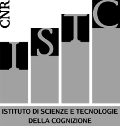Performing Actions in a Changing Environment (PACE)
An important feature of our sensorimotor system is its capacity to support adaptive dynamic interactions with the everchanging environment.
Catching a falling cellphone and reaching a fast approaching tennis ball even when those are temporarily precluded by visual obstacles are examples of the remarkable predictive interceptive actions that humans can normally perform.
These abilities requires dynamic visual motion processing and fine predictive motor control that rely on manifold information, principally processed in the medial parieto-frontal network, a circuit linking in humans and non-human primates the medial posterior parietal cortex (PPC), the dorsal premotor cortex (PMd), and the prefrontal cortex through direct cortico-cortical connections and, subcortically, via the striatum.
In primates, the medial PPC is essential for the sensorimotor transformations required for planning and executing hand movements towards external stimuli. The medial PPC receives signals from nearby visual motion areas, which suggests an essential contribution by the medial parieto-frontal network to the predictive processing of motor control in dynamic conditions.
The project PACE will investigate the structure of the cortical and subcortical networks supporting visually guided adaptive sensorimotor control of reaching and unveil its neurocomputational mechanism.

